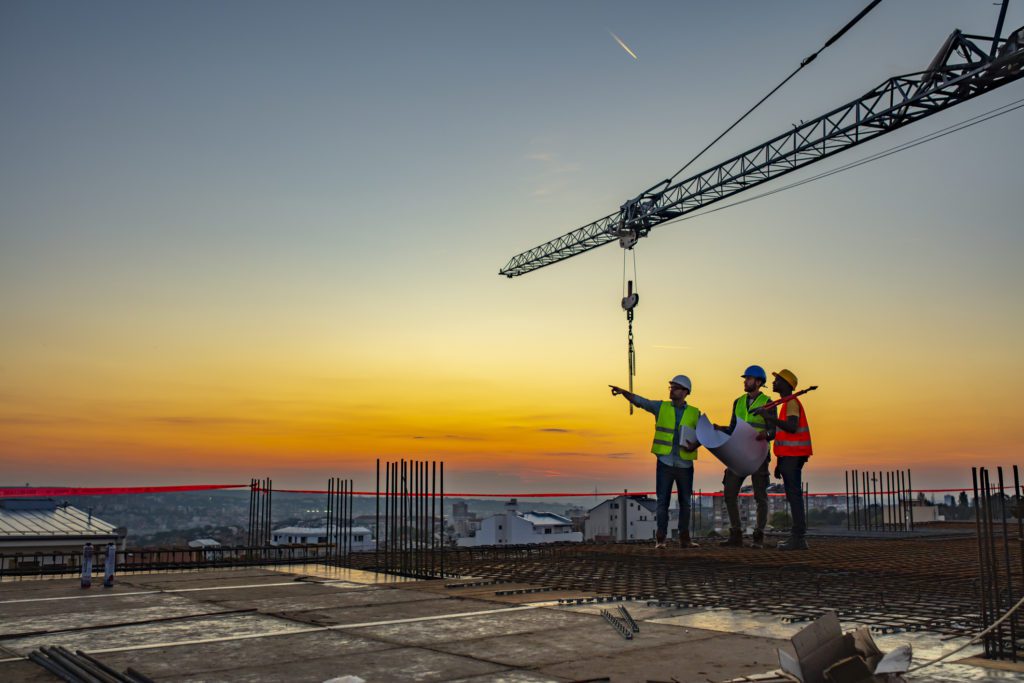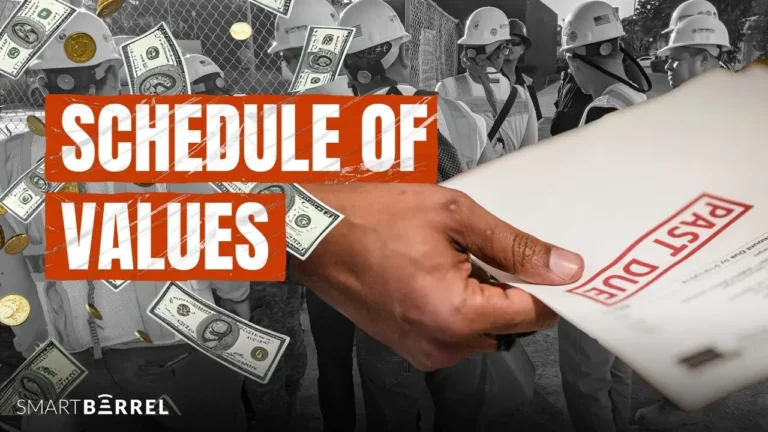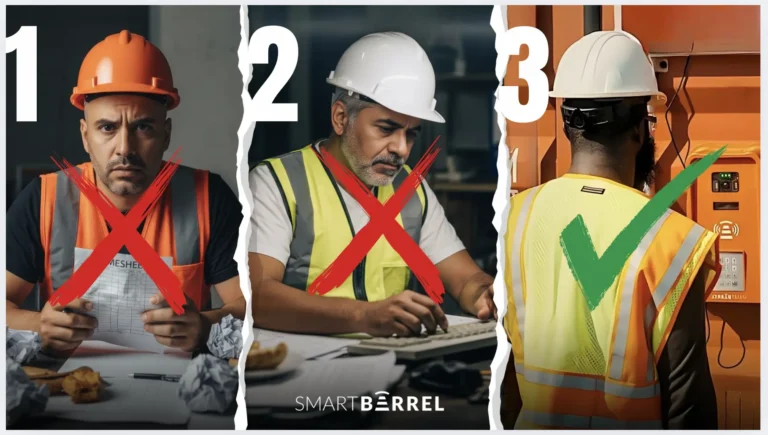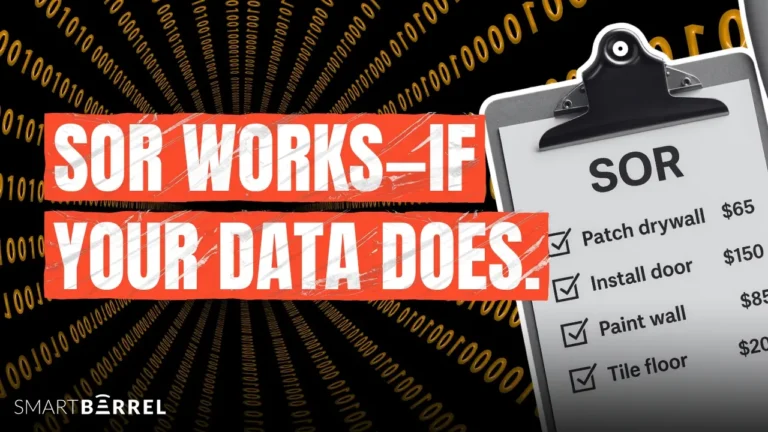Due to the large and complex nature of construction projects, it’s often required to hire subcontractors to complete segments of the project that require more specialized knowledge, like electric or concrete work. Not only does it prevent risk, but it can save general contractors time and energy.
But it’s not enough to simply assign subcontractors work—properly managing them is crucial to the project’s success. Here are some tips on how to manage subcontractors, and how the SmartBarrel device makes labor tracking easier and more efficient.
1. Use labor and workforce management technology
These days, general contractors who use technology to manage subcontractors find it much easier to keep track of everything. Features like manpower tracking and time tracking ensure you’re collecting and receiving accurate information from the field, so you know exactly who is on your job site and that everyone is where they need to be.
Look for solutions like the SmartBarrel device that use technologies to verify a worker’s identity, such as biometric facial verification. Labor management technology should be easy to integrate into the job site and require little to no IT overhead.
2. Ensure they understand their documented scope of work
Assuming that subcontractors understand their obligations can be counterproductive and create room for future conflict, so it’s important to outline exactly what’s expected of them.
A subcontractor’s contract should clearly describe their expected scope of work, defining their specific role while setting expectations for quality and deadlines. State long-term goals for everything that needs to be completed. Short-term goals should be described in deliverables to help subcontractors understand what responsibilities need to be done (and when).
Consider including additional things in the agreement, such as if the subcontractor will themselves be supervising other trades (whether it’s through meetings, scheduling, or management), or how the subcontractor should handle changes or unforeseen circumstances when they occur in the middle of the project.
When it comes to effective subcontractor management, It’s important to put all commitments in writing. While verbal agreements can be legally binding if they include all the necessary elements, they’re easily forgotten and may be misremembered by all parties involved. Plus, you’ll have a clearer and more airtight case if disputes arise.
Remember to review and sign this document every year to renew obligations or adjust them as needed.
3. Provide enough information to subcontractors
Effective subcontractor management also means providing subcontractors with enough information so they can sufficiently complete the job.
Before subcontractors enter the construction site, it’s a general contractor’s responsibility to provide direction and supply subcontractors with all the information that’s applicable to the job. This may include, for example, relevant documents or different types of construction drawings. Any useful resources should be offered, with enough available support to help them complete their segment of the project in a timely manner.
4. Establish and enforce timelines
Setting a timeline that adheres to the project’s schedule is crucial. However, not just any deadline should be set—consider whether it’s reasonable enough for a subcontractor to deliver quality work.
You can set up daily or weekly goals to track and review progress. Keep in mind that while deadlines are important, a certain degree of flexibility is also vital, especially when circumstances change mid-project, which is all too common in this industry.
5. Set up channels of communication
Managing subcontractors in construction requires effective communication to keep everyone informed and on the same page. Especially since construction projects are often fast-paced and hectic, it’s all the more important to prevent miscommunications and work conflicts.
Assign a main point of contact for subcontractors to consistently communicate with, and let them know to direct any questions or concerns about scheduling, safety, work quality, or emergencies to this designated person.
Any changes to the project’s plan or the subcontractor’s scope of work should be conveyed, with any necessary documentation updated and signed to acknowledge the changes.
6. Check in regularly
To ensure that the job will be delivered on time and up to par, check in regularly by holding daily follow-ups or weekly meetings. Go through the review process and touch base on job progression, addressing any concerns that arise.
To assess the subcontractor’s performance, consider factors such as whether they met their daily or weekly targets. It also helps to ask clients for feedback specifically concerning the segments the subcontractor worked on to inform your evaluation.
7. Make sure they’re following safety regulations
To manage subcontractors, it’s critical to ensure that they’re complying with local safety regulations.
While it’s standard to check the validity of a subcontractor’s insurance and their certifications, on the job, make sure each subcontractor understands that they must follow proper protocol to prevent potential health and safety hazards.
Manage subcontractors more effectively with the SmartBarrel device
The SmartBarrel device is a simple and easy-to-use solution that fits job sites of all sizes. Set-up is simple, and it requires no advanced infrastructure and no IT department is required to oversee its use. Solar-powered, self-connected, and weatherproof, the box is built to withstand falls.
Workers sign in through a keypad, RFID fob, and biometric facial verification, eliminating the risk of buddy punching.
Safety directors and managers, benefit from features such as:
- Worker onboarding and orientation (including the collection of emergency contact information and a verified acknowledgment of safety training)
- An accurate daily log
- Personal protective equipment (PPE) verification and tracking
- Incident reporting
- Broadcasting tools to communicate egress updates and alerts
- Document and certification tracking
Operations teams benefit from:
- A daily log that’s automated
- Tracking in real-time who’s on-site per trade
- Easy communication with any worker via a designated cell phone number
- Work summaries collected via SMS, eliminating the need for you to chase information
- Weather and forecast monitoring
- Easy and quick access to information about any worker on-site
- Access control to limit who can access the job site
Plus, the SmartBarrel device integrates with Procore, CMIC, FoundationSoft, Viewpoint, and Autodesk.
Need a better way to manage subcontractors? Book a demo with SmartBarrel today!






